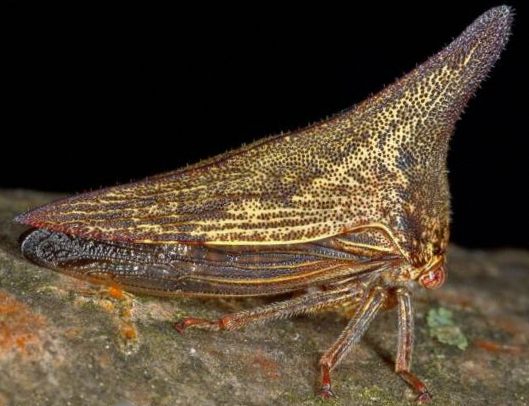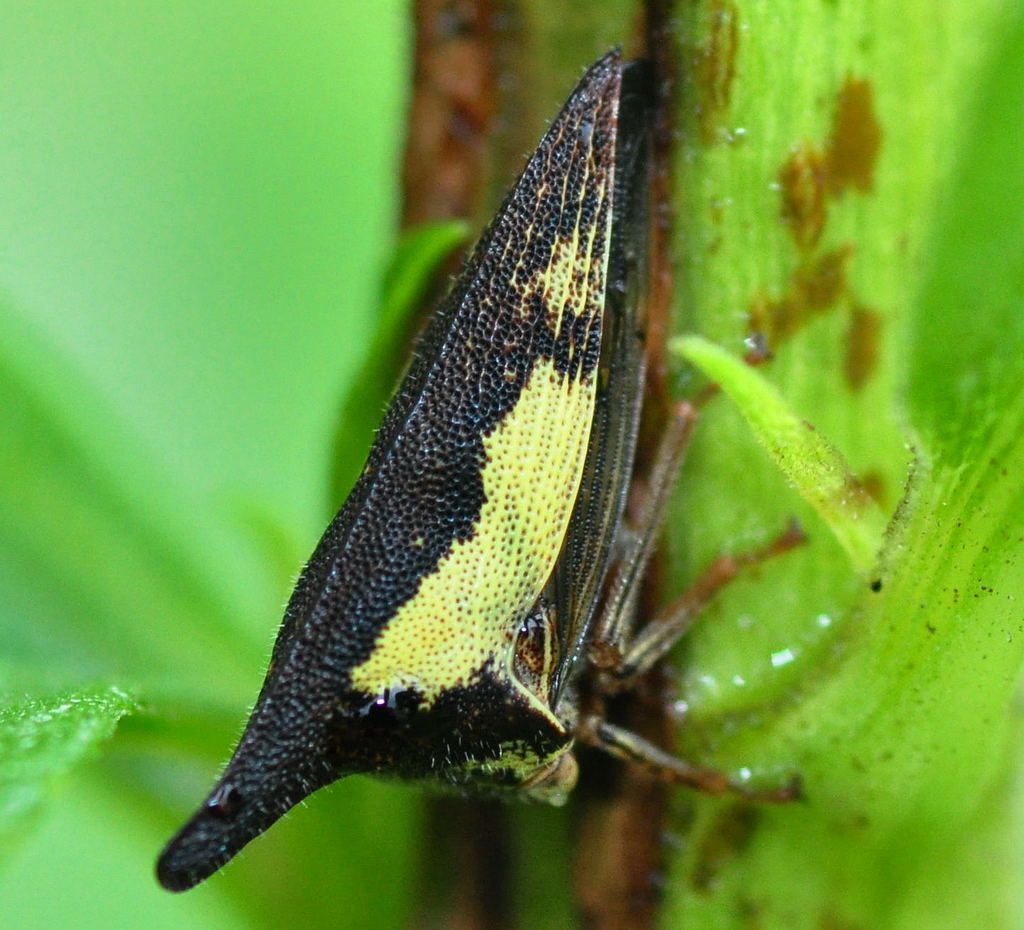| Comment: Can be attracted at night with a light. A single Black Locust may serve as a host for up to 500 or more individual T. bimaculata's. Eggs are laid near the ground in slits in the bark. It takes about a month from hatching for a nymph to mature to adulthood. Nymphs gradually move up the trunk as they mature. The treehoppers cause little damage to the host plant. (BG)
This species is often times guarded or tended by ants. While both adults and nymphs are tended by ants, a benefit of this ant-hopper mutualism is only seen in nymphs. Nymphs secrete honeydew, sugary waste from feeding on the phloem of plants, which the ants use as a food resource. Ants stroke the nymphs with their antennae to cause greater quantities of this secretion. Ants will defend the nymphs from any predators by voraciously biting. Ant species that are involved in this mutualism include: Formica obscuriventris, Formica exsectoides, Camponotus pennsylvanicus, Crematogaster lineolata, and Prenolepis imparis. (ADW)
A mite in the family Erythraeidae has frequently been found parasitizing adults (per studies in Missouri). These bright red mites attach themselves to various parts of the pronotum. (Kopp & Yonke, 1974)
The only species that could be confused with T. bimaculata is the other member of this genus, T. uhleri. This rare species has yet to be recorded in North Carolina, but has been found across the state border in Tennessee, as well as Virginia and Maryland; see here and here. This species, whose host plant is American [wild] plum (Prunus americana), has a forward-facing horn, rather than one that is angled upward, and is also a dark brown color, lacking the yellow stripes/striations of T. bimaculata. This rare species should be searched for in the mountains. The horn is possibly convergent evolution between these two species and they are likely not closely related (M. Wallace pers. comment). |

 »
»




 »
»


